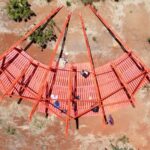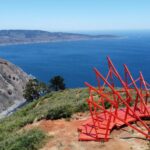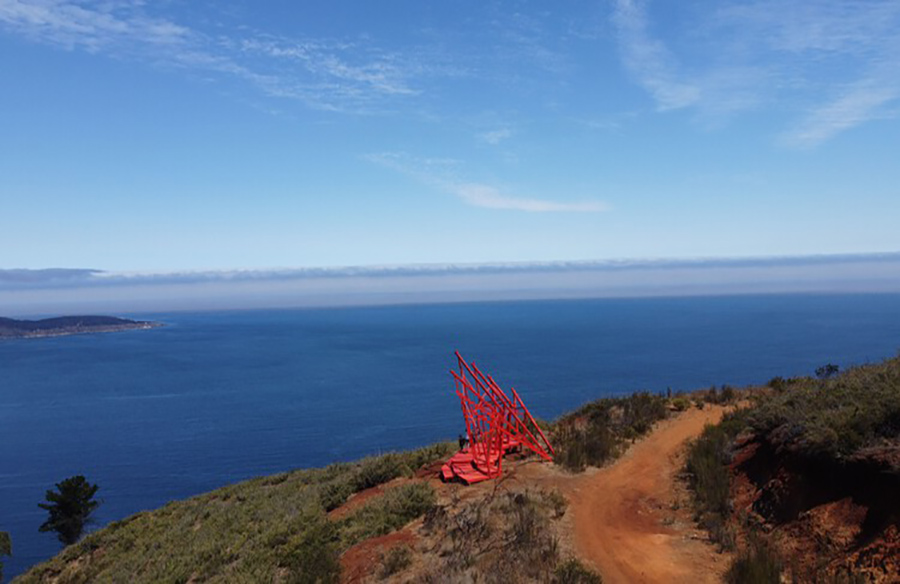
Introduction: Fusing Art and Environment
Pabellón 25, situated within the Federico Santa María Cliffs Sanctuary in Valparaíso, Chile, stands as a testament to the symbiotic relationship between architecture and nature. Conceived as an interpretive pavilion to honor the landscape and ecosystem of the sanctuary while commemorating a milestone anniversary, this project embodies a harmonious blend of design and conservation.

Academic Collaboration: A Journey of Discovery
Initiated by Dum Dum Lab and the Department of Architecture at UTFSM, Pabellón 25 emerged from an interdisciplinary workshop led by faculty members and students. Through rigorous exploration of wooden construction systems and iterative design strategies, participants embarked on a creative journey to conceptualize a pavilion that respects both tectonic constraints and environmental context.
Design Concept: Embracing the Landscape
The pavilion’s final design, selected through an internal competition, features a radial arrangement of wooden trusses rising gracefully from the terrain. With heights ranging from 3.5 meters at the perimeter to 6.8 meters at the center, these trusses create a striking visual focal point within the sanctuary. A series of stepped floors guide visitors on a journey of exploration, offering opportunities for education, relaxation, and contemplation amidst the natural beauty of the park.
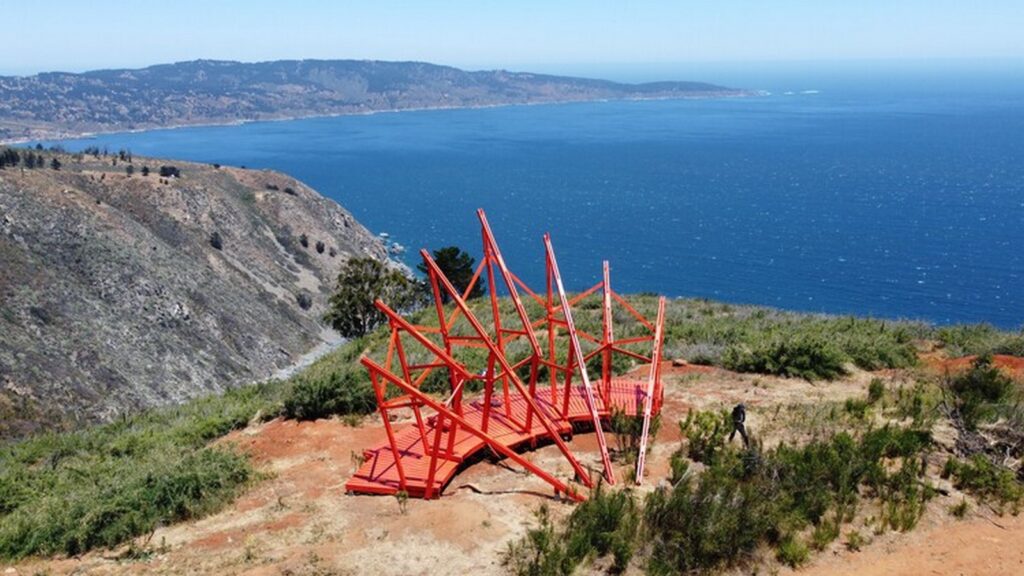
Structural Innovation: Blending Form and Function
Crafted from sustainable materials, including 2×6″ sections for trusses and floor beams, Pabellón 25 embodies a commitment to durability and resilience. Concrete point foundations and steel connectors, meticulously designed and manufactured, ensure structural integrity in the face of the sanctuary’s challenging terrain and climate.
Environmental Integration: A Gateway to Discovery
Positioned overlooking the Pacific Ocean, Pabellón 25 serves as a gateway to the sanctuary’s breathtaking vistas and biodiversity. Scientific illustrations by marine biologist Sol Pacheco adorn the pavilion, offering insights into the region’s endemic flora and fauna. By fostering a deeper connection between visitors and their natural surroundings, the pavilion inspires stewardship and appreciation for the fragile ecosystem.
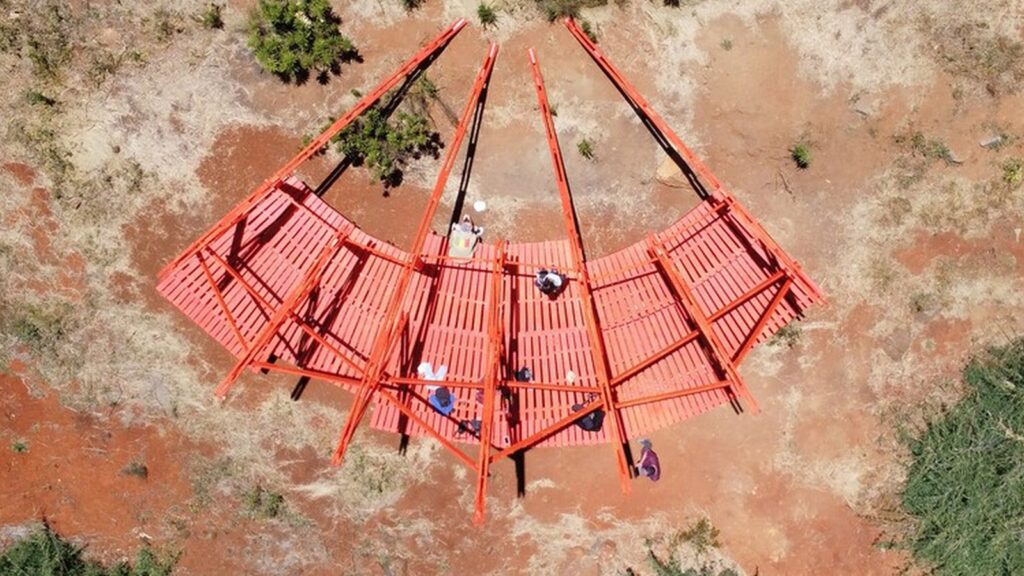
Educational Legacy: Inspiring Future Generations
More than a physical structure, Pabellón 25 represents a collaborative endeavor to promote environmental awareness and conservation. Through immersive educational programs and public outreach initiatives, the pavilion serves as a catalyst for community engagement and ecological advocacy, empowering future generations to safeguard our planet’s precious resources.
Sustainable Partnerships: Ensuring Longevity and Impact
In partnership with Concón Maderas Impregnadas, Pabellón 25 benefits from advanced wood treatment techniques that enhance durability and weather resistance. By investing in high-quality materials and innovative construction methods, the pavilion minimizes the need for maintenance interventions, ensuring its continued preservation for years to come.
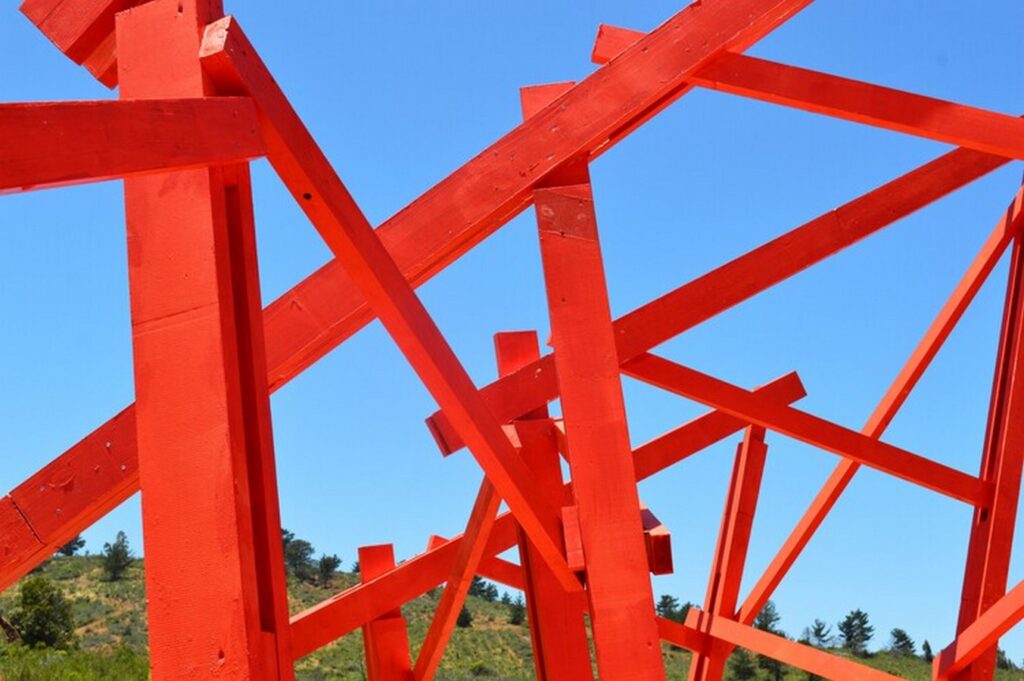
Conclusion: A Beacon of Innovation and Inspiration
As a beacon of innovation and inspiration, Pabellón 25 stands as a testament to the transformative power of architecture in harmony with nature. By embracing sustainable design principles and fostering interdisciplinary collaboration, this landmark pavilion embodies the spirit of conservation and exploration, inviting visitors to embark on a journey of discovery and wonder amidst the natural splendor of Valparaíso’s coastal cliffs.








